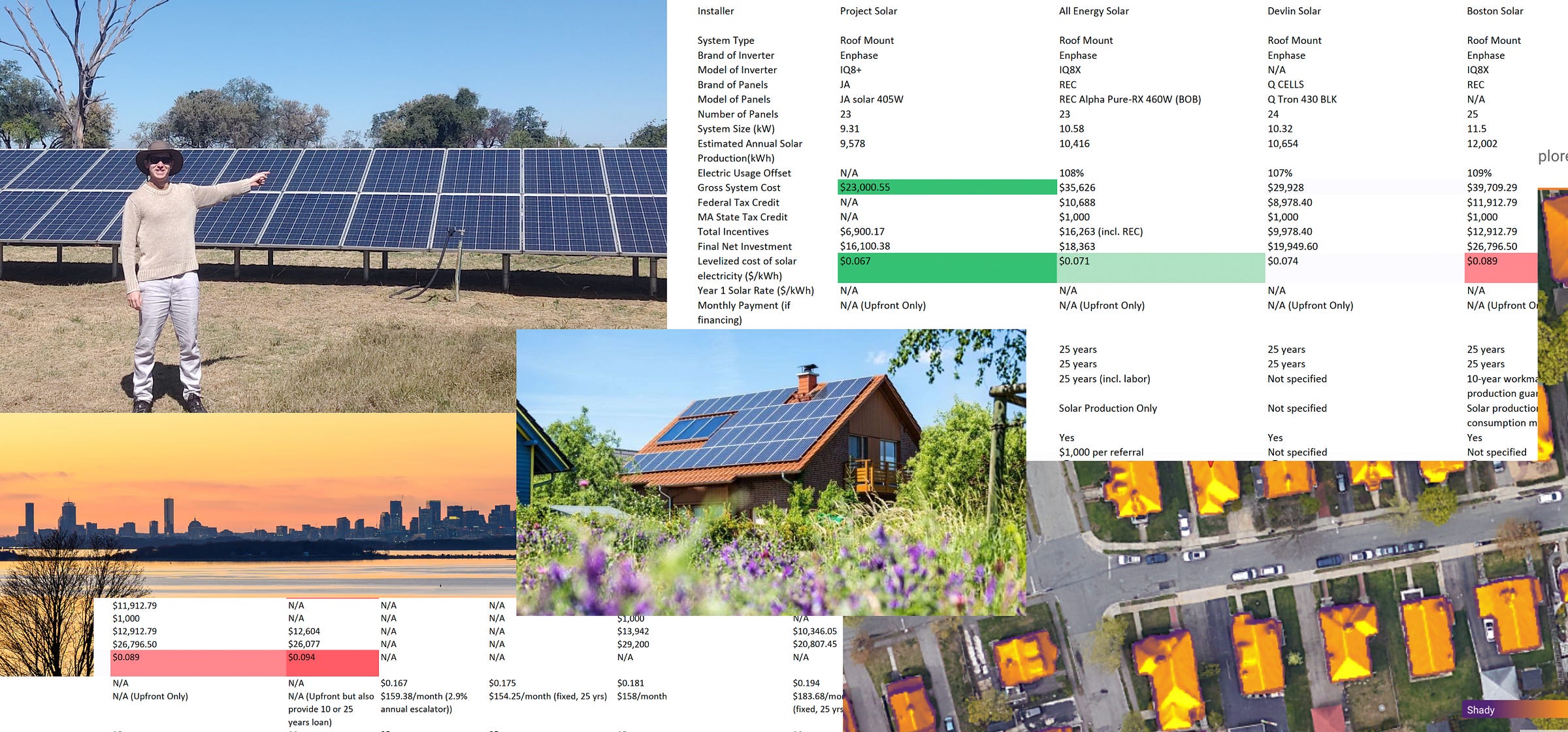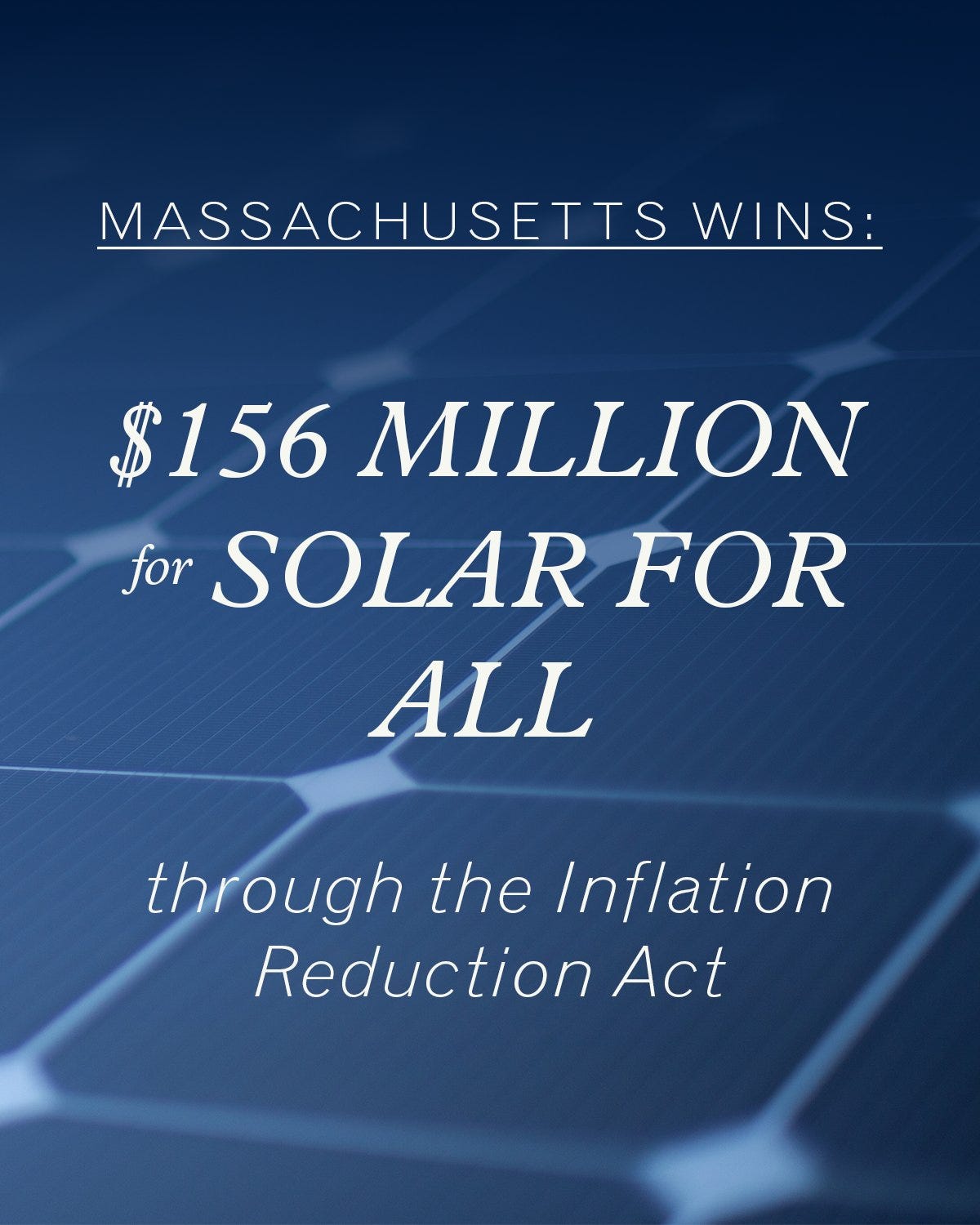2025 Solar Benchmark & Market Report
What to Pay, Who to Trust, and How to Save in a Rocky Post-IRA Market
We got 10 quotes from highly rated contractors (4.5+ stars) based on Solar Reviews, EnergySage, and/or Reddit for the exact same house. Plus, we included 2 more to account for the high & low ends of the market.
Here’s what we found, a policy analysis, and who we recommend/who to avoid!
Preface: You can typically get solar in a single family home. Multifamily? It gets a bit harder since there’s a question of who owns the roof. Try community solar.
Executive Summary
Note: To keep things consistent and fair, all quotes are based on the same setup: a single-family home of about 1,300 square feet. That way, you’re comparing apples to apples.
If you’d like to pay upfront:
The average price before rebate is about $30,000 for 10kW system
The total incentives range from $7,000 to $16,000 depending on system size
The average price after rebate is about $21,500 for 10kW system
Note: the federal rebate (30%) got axed by Congress. It goes away in 2026.
The smaller, revitalized, state-based SMART program will launch 10/15/26
Leasing & PPA are alternative options. We’ll cover that later on, but since the Energy Savers Home Loan program exists in MA, we generally do not recommend going with the leasing option if you’re considering solar + weatherization/heat pump renovation all at once.
Otherwise:
Project Sunroof from Google is pretty accurate
Payback period is about 4 to 5 years
You can avoid the payback period if you do the leasing or PPA
Who to Avoid
Every solar contractor is about to try to sell you a system knowing that the federal tax credit is about to go away. And that has merits. But Laminar Collective co-founder Hannan Rhodes, who worked in commercial solar, has another angle.
His take is that there are 2 types of solar contractors:
Has Crews: these are full-service solar companies that talk to customers, and has their own project managers and installation crew. They tend to be in it to build a stable business.
No Crews: these companies are collections of salespeople & loan originators that subcontract out all the work, and are basically just in it for the money. These companies exist in a high-margin, high-rebate environment.
Hannan’s take is that #2 is going to exit the market in droves, because the margins are going to drop once the tax credit goes away. Planet Money has a great podcast about these types of companies:
You’re going to want to avoid #2. If a company isn’t built for a lower-margin environment, and isn’t in it for another reason (e.g. fighting climate change), they may exit the market. And you’ll be left with no customer service.
Our selection mostly attempts to exclude these contractors.
Who We Recommend
You can find the complete benchmark here: Full Benchmark Sheet. For notes on what this table includes, reference this footnote1.
Our primary recommendation is to go with a highly-rated, more local and slightly larger contractors, which are more likely to (1) have enough capital to ride out policy changes and (2) benefit from the continued state support in MA/know how to apply for Massachusetts-based credits.
Upfront Options: All Energy Solar, Devlin Solar
All Energy Solar & Devlin Solar tops our solar rankings for the upfront option. They are Massachusetts based, and as far as we know, have their own crews. All Energy Solar is the larger of the two, with 154 employees listed on LinkedIn.
They are both eligible for the Energy Saver Home Loan Program, along with Great Sky Solar.
You’ll notice that we weight LCOE (Levelized Cost of Electricity) & final net investment highly2 -
While Project Solar has a lower upfront cost, there are a few downsides:
Exposed to national-level policy impact since they operate in multiple states.
VC-backed & they’ll need to cut costs if funding dries up.
Salesperson for our benchmark was also rather pushy.
Their automated approach is affordable, but if you go with them, expect to actively/extensively drive project management. Read LC member Nick’s account here in the footnotes3.
PPA/Leasing Options: Energy Pal & New England Solar
If you’re leasing or doing a PPA, we use the Year 1 Solar Rate — this is basically how much you’ll pay per kWh in your first year. It’s a helpful way to compare short-term affordability.
It’s interesting to see that Blue Raven, in particular, has the highest price, since they are by far the biggest solar company in our entire benchmark. This reflects the higher overhead pattern we’ve observed in the heat pump market as well.
Weighting is fairly even for this section, as you’ll see in a bit that we recommend buying or taking out a loan, since Massachusetts has the ESHLP program.
Project Process & Timeline
Expect this process to take an estimated 55 - 75 days total at minimum. If you are trying to get the residential tax credit before it expires, we recommend kicking off your process by the end of September.
Prices may drop in the future in the absence of federal incentives, so if you don’t manage to get in this year, it’s not the end of the world. (Plus, there will be the SMART program relaunch in MA.)
To Buy, Loan, Lease, or PPA?
When it comes to going solar, there are three main ways to pay:
🟢 Buy the system upfront
In MA specifically: buy using an ESHLP loan from Mass Climate Bank
🟡 Lease it with a monthly payment
🟡 Sign a Power Purchase Agreement (PPA) where you pay for the electricity it generates
High Budget: Pay Upfront
If you can afford the full cost upfront, this option offers the best long-term return. You own the system, and can take advantage of federal and state tax credits.
Moderate/Low Budget: Finance It via. ESHLP
In Massachusetts specifically, which is relevant for all our Laminar Collective members, programs like the EnergySaver Home Loan Program (ESHLP) from the Mass Community Climate Bank let you finance your system with 0% or low interest. You still get to own the system and benefit from incentives.
We’ve asked LC members and have found that ESHLP does take a while to apply for. The entire process takes ~45 days, so you’ll want to kick it off early-ish. Typically, this loan is designed for people who want to renovate an entire house (e.g. weatherize + heat pumps + solar). If this is you, great - otherwise, we can’t speak exactly to how it is for standalone solar.
Low Budget: Lease or PPA, No Upfront Cost.
Leasing or signing a Power Purchase Agreement (PPA) means you don’t have to pay anything upfront, but you’re unlikely to get as good of a rate in the leasing scenario as ESHLP. You don’t own the system, but you get guaranteed power, fixed or low-cost rates, and ongoing maintenance.
This is probably the easiest way to go solar on a budget since you wouldn’t have to go through the logistics of applying for an ESHLP loan.
Policy Trends & Future Outlook
You can also read EnergySage’s policy analysis here: Congress just killed the solar tax credit—here’s what it means for homeowners
Solar For All
Yeahhhh I think this is getting iced.
The MASFA programs expect to begin providing funds for the single-family loan and lease programs in Summer 2025. This page will be updated as more information becomes available, including how residents can apply for the program.
ESHLP is your better bet.
Will Prices Go Down?
The million dollar question. In a way, the coming year is going to be a natural experiment in market pricing response to a demand shock, and we look forward to doing this solar benchmark again in a year to see
Which contractors are still here
What they are pricing without the federal tax credit
My prediction? I suspect that prices will fall somewhat, consistent with a classical supply & demand model:
Here’s what my super cool DOER friend has to say about the new SMART program coming up on October 15th:
Basically, if they own the system, they’ll be able to get an incentive payment of $0.03/kwh4 (or $0.06 for low income customers).
Those are the rates through the end of the year though - may change for 2026 😬
So, ultimately, the residential solar market won’t collapse, but the composition of contractors will change.
The Policy Context
The GOP-dominated Congress has repealed most tax credit & incentive on the federal level that we have for solar, wind, and renewable energy while giving out more incentives for oil & gas.
I’m not going to lie to you. Oil and gas interests politically dominate the current federal government and the existing power structure exists to enrich fossil-fuel companies. How else do you end up with billions in intangible drilling cost deductions?
While there’s a big push to preserve credits, it’s looking likely that this won’t happen on the national level.

It is really, really strange to see an administration that shouts “energy dominance!” from the rooftops adopt policies to hamstring the top new energy source in states like Florida & Texas. But it makes a bit more sense when you consider this less a move towards true energy dominance, and just a good old government handout to legacy fossil fuel interests.
The overall impact of tilting the playing field in favor of oil & gas is that the price of electricity is going to go up higher than previous projections, because
MA electricity prices are tied to gas prices, which is now tied to the global markets b/c of the LNG export market
The 7-year wait for natural gas turbines in the middle of a nationwide AI data center buildout will slow new infrastructure buildout
Fewer solar plants going online in the south constrain the national gas market
Etc.. etc..
It really makes you think about who has the say in energy policy in this admin, yeah?
7/11 update: hey, look at that. Gas prices are going up again. Who could’ve seen that coming?
This table includes:
System size, number of panels, total cost (before and after incentives), LCOE, warranties, and whether they offer system monitoring
Normalized cost after standardizing for a 10 kW system
A clean, visual layout that lets you quickly spot the differences
Clear grouping by payment model — Upfront Purchase or Lease/PPA
Most contractors offer top tier solar panels, top 2 brands are Q Cell and REC.
A second comment here to share my experiences with my MA install with Project Solar. I didn't find the same pushiness for the initial sales call, this might be more of a crapshoot with who you get as the sales rep. However, I will say that the project managment isn't the best. For MA, they contracted out my install to Freedom Forever, and everything feels like multiple layers of bureaucracy. I'll call my project solar rep, who will then call the freedom forever rep, who will then have to check with someone else at Freedom, who then needs to often check with the town. So a simple thing ends up taking a week or more because of all these layers. I initially got sold the system in January, and it's still not turned on in July, due to a large number of different delays (some expected, some not). We just got the final inspection pass from the town, so hopefully Eversource can get it turned on soon.
I will say that they were still by far the cheapest per kW, the actuall install appears pretty professional to me, and both the project solar and freedom post-sale coordinaters have been incredibly nice given that I've been typically calling them multiple times a week. If you're willing to deal with all of this to get the lowest cost per kW, it might be worth it.
Given an average 10k kWh consumed in a year for a household, that’s a few hundred dollars per year at current rates. Low thousands over lifetime.
























A second comment here to share my experiences with my MA install with Project Solar. I didn't find the same pushiness for the initial sales call, this might be more of a crapshoot with who you get as the sales rep. However, I will say that the project managment isn't the best. For MA, they contracted out my install to Freedom Forever, and everything feels like multiple layers of bureaucracy. I'll call my project solar rep, who will then call the freedom forever rep, who will then have to check with someone else at Freedom, who then needs to often check with the town. So a simple thing ends up taking a week or more because of all these layers. I initially got sold the system in January, and it's still not turned on in July, due to a large number of different delays (some expected, some not). We just got the final inspection pass from the town, so hopefully Eversource can get it turned on soon.
I will say that they were still by far the cheapest per kW, the actuall install appears pretty professional to me, and both the project solar and freedom post-sale coordinaters have been incredibly nice given that I've been typically calling them multiple times a week. If you're willing to deal with all of this to get the lowest cost per kW, it might be worth it.
> for 10kWh system
I think you mean a 10kW system here. The systems are typically sized in kW of nameplate DC output, then a secondary rating of kW AC output (from the inverter(s)), then usually with a guesstimate of how many kWh they will produce per year.